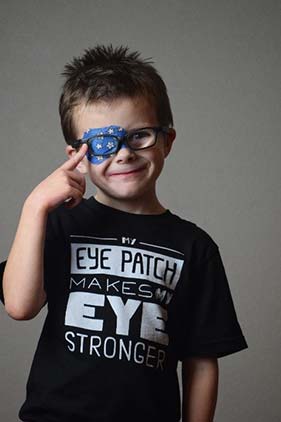By: Nick Blight, OD
Commonly called “Lazy Eye”, amblyopia, is a condition that starts in early childhood, and if left untreated, persists through adult life. Amblyopia is defined as reduced vision (20/30 or worse) of an otherwise healthy eye. The decreased vision is due to poor development of the visual pathway between the eye and the brain. There are three main causes for a poor eye-to- brain connection. The first is a large difference in prescription between the eyes. The second is blocked vision in one eye from a congenital cataract or other visual obstruction. Finally, the third reason is due to an eye that turns, either in towards the nose or out towards the ear. In each of these three situations, our energy efficient brains will actively select to ignore or “suppress” the eye with significantly poorer vision, which hinders the development of the visual pathway.
Evaluation of the structure and visual ability is critical to identify and treat lazy eye. Amblyopia starts early in life and can cause lifelong visual impairment, making eye examinations at an early age crucial. The American Optometric Association recommends childhood evaluation at 12 months, 3 years old and again right before starting school.
making eye examinations at an early age crucial. The American Optometric Association recommends childhood evaluation at 12 months, 3 years old and again right before starting school.
The treatment of amblyopia depends on the severity of reduced vision. The first step is to determine the correct prescription for glasses that provide the clearest vision to both eyes. Improved image clarity prompts the brain to stop suppressing and use the impaired eye, leading to a stronger connection to the brain. This first step is critical and often improves eyesight within the first 4-6 months of wearing glasses full time. The next steps may include wearing an eyepatch over the dominate or “stronger” eye to encourage the brain to become more reliant on the weaker eye.
In combination with occlusion therapy, your doctor may also prescribe a structured set of visual activities, or vision therapy to make improvements faster.
The Optometric Physicians at Central Oregon Eyecare and the American Optometric Association recommend children have their first eye examination at 6-12 months of age. Additionally, subsequent exams are recommended at 3 years, right before school begins and annually from that point forward. Please make sure your loved ones are evaluated early to ensure the best visual development and sight for life.
Comments are closed.



